#okuri inu
Photo
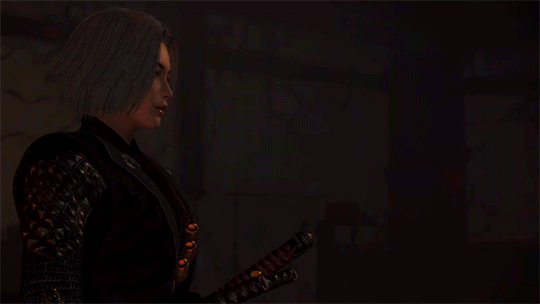

Boss intro: Maeda Toshiie
2 notes
·
View notes
Text

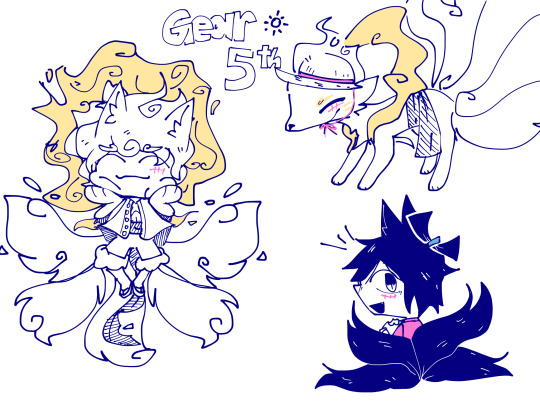
Kitsune Luffy...
+ Yamato and Luffy
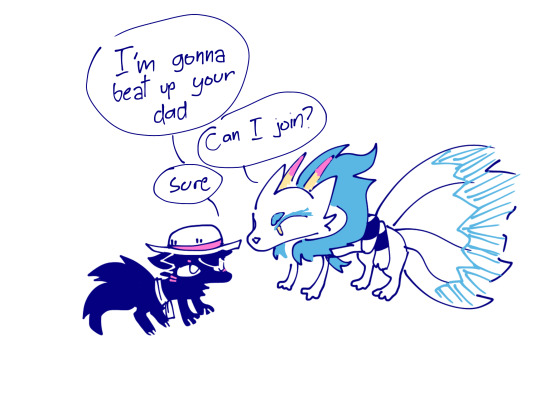
#one piece#one piece spoilers#monkey d. luffy#gear 5 luffy#Ace is an Okuri inu and Sabo is a Nekomata#yamato one piece#moonel.art
598 notes
·
View notes
Text
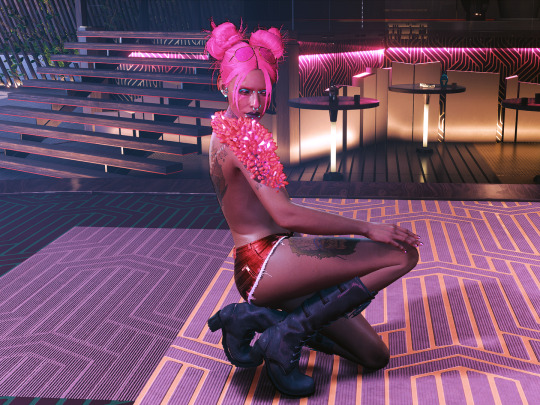


new concept for rockergirl au!!!!!
#someone probably remembers i had one already ajdhsjsjss#i had A LOT OF FUN with her design!!!!!!!#canon v's style is 1000% different so im so happy to try new styles!!!#thinking about her stage name and torn between hellhound or okuri-inu#anyways - more shots on the way hehehe#cyberpunk 2077#val garcia#kleff vp
29 notes
·
View notes
Text

❝ Hm . . . And why is this important to you ? I'm curious. ❞ / @erabundus gets a one - liner.
#erabundus#// i give you the okuri inu shiragiku being a curious soul#// i hope this is alright. if not let me know & i can write up something different#⸻ ❛ 𝐢𝐜 » shiragiku.
2 notes
·
View notes
Text

Okuri-inu - Lunaotic
#art#artist#digital art#drawing#digital illustration#artists on tumblr#digital drawing#my draws#animals#painting#wolf art#wolf#canine#wolves#creepy#creation#spirits#magic#ritual#occult#draws#tumblr draw#artwork#illustrator#art style#illustrators on tumblr#my artwrok#myart#my art#my post
230 notes
·
View notes
Text
The real life inspirations behind new characters in Touhou 19 (Unfinished Dream of All Living Ghost)
While I haven’t been posting much about Touhou as of late, I felt obliged to put together the customary post about the inspirations behind the new characters. The new game genuinely renewed my interest. In contrast with similar write-ups pertaining to previous games the research is not entirely mine - some of the sections are a result of cooperation between me and @just9art.
Without further ado, let’s delve into the secrets of the new cast. Find out if Biten is the first “Wukong impersonator” ever, when a tanuki is actually a badger, and why Hisami both is and isn’t an oni. Naturally, the post is full of spoilers. Also, fair warning, it's long.
1. Biten Son - sarugami + Sun Wukong

Sarugami means “monkey kami”, the monkey in mention being the Japanese macaque.To my best knowledge, the term is actually not used commonly in English - the results on jstor and De Gruyter are in the low single digits, Brill outright has nothing to offer. Translations are much more common.

Sarugami are particularly strongly associated with Mount Hiei. You might have heard of it because of its association with Matarajin, though in this case he’s not exactly relevant. Instead, it is believed the monkeys act as messengers of Sanno (the “mountain king”), Sekizan Myojin and Juzenji. Sanno himself could take the form of a monkey according to medieval texts, while Juzenji can be accompanied by a deity depicted as a man with a monkey’s head, Daigyoji, known from the Hie mandala. Sarutahiko is also associated with monkeys based on the similarity between his name and the word saru.
Bernard Faure notes that despite the clearly positive portrayal of monkeys as semi-divine beings in service of these deities, their perception in folklore and mythology can nonetheless be considered ambivalent, because they could be viewed as aggressive. There are even examples of sarugami being portrayed as monstrous antagonists to be defeated by a hero. The best known tale of this variety is known simply as Sarugami taiji. It is preserved in the Konjaku monogatari. Here the sarugami is a fearsome monster who terrorizes a village and demands the offering of one young woman each year.
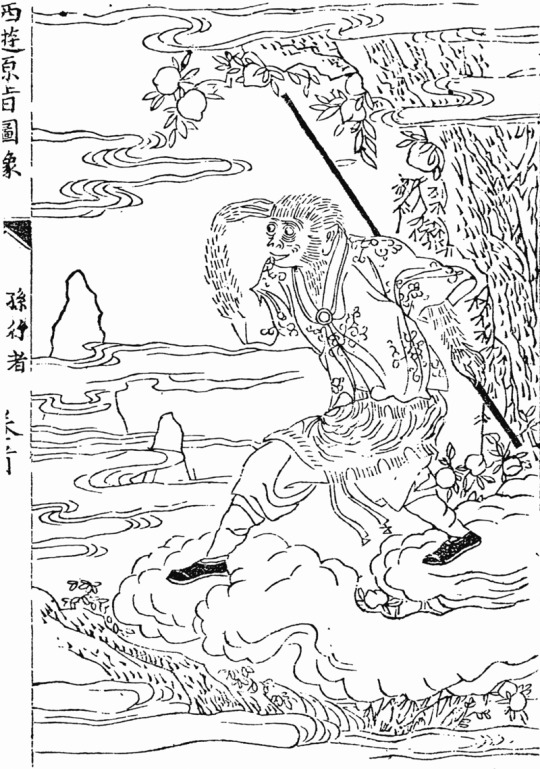
In contrast with the sarugami, I do not think Sun Wukong, one of the protagonists of the classic Chinese novel Journey to the West, needs much of an introduction. We reached the point where even in the west he is recognizable enough to warrant toys based on him (there’s a Lego Wukong on my desk right now). Biten's design has many callbacks to traditional portrayals of Wukong, including the staff (which in the novel is a pillar stolen from the undersea palace of a dragon emperor) and a very distinctive diadem (in the novel making it possible to pressure the unruly Wukong into obeying the monk he is meant to protect).
As a curiosity it’s worth noting that “fake Wukong” is not a brand new idea - in the novel itself, one of the enemies of the heroes, Six-Eared Macaque, actually impersonates him for a time.
Wukong is effectively himself a “divine monkey”, seeing as despite his origin as a literary character he actually came to be worshiped as a deity in mainland China, Taiwan and various areas with a large Chinese diaspora. The topic of Wukong worship itself came to be an inspiration for literature, starting with the excellent The Great Sage, Heaven’s Equal by Pu Songling, a writer active during the reign of the Qing dynasty, in the early eighteenth century.
2. Enoko Mitsugashira - “immortal yamainu” + Cerberus
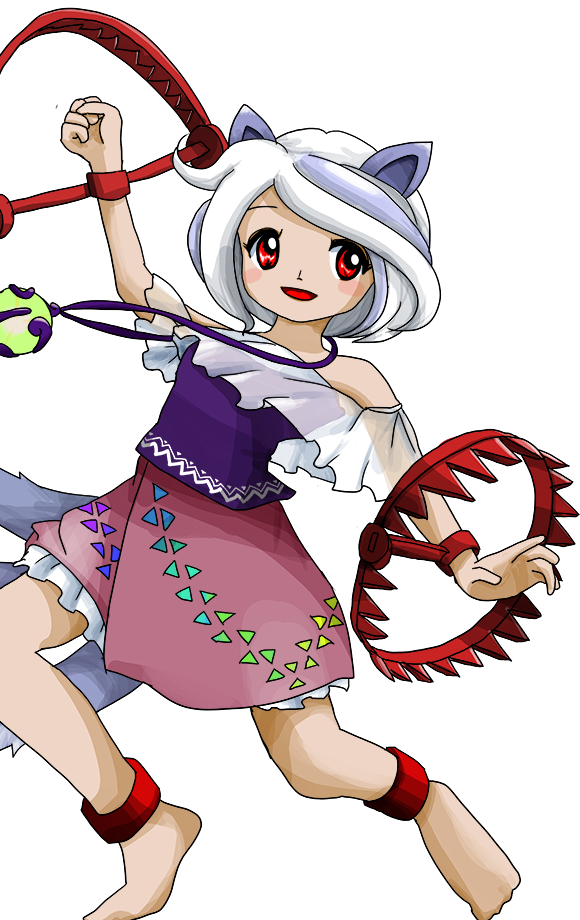
Enoko gets the least coverage here, because there really isn’t much to say. Yamainu, “mountain dog”, isn’t really a supernatural creature, it’s an old term for either the extinct Japanese wolf, a type of feral dog, or a hybrid between these. It can also be used as a synonym of okuri-inu, a youkai wolf believed to accompany travelers at night.

There’s actually a distinctly Journey to the West-esque component to Enoko’s backstory, but I have no clue if this is intentional. In the aforementioned novel, many of the antagonists, who are generally demonic animals, are motivated by the desire to devour the flesh of the protagonist, the Buddhist monk Tang Sanzang, because it is said to grant immortality. Granted, given the obscurity of the figure Zanmu is based on - more on that later - perhaps this is an allusion to something else we have yet to uncover.
Cerberus, being probably one of the most famous mythical monsters in the world, does not really need to be discussed here. The illustration is included mostly because I like Edmund Dulac and any opportunity is suitable for sharing his illustrations. I do not think it needs to be pointed out that Enoko's bear trap weapons are meant to evoke Cerberus' extra heads.
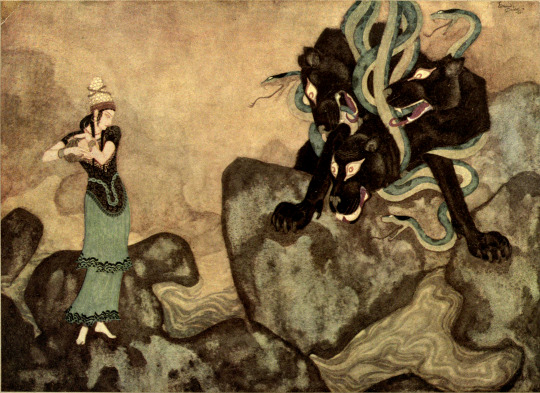
3. Chiyari Tenkajin - tenkaijin (+ mujina) + chupacabra

While my favorite animal youkai not yet featured in Touhou is easily the kawauso (otter), I was very pleased to learn we sort of got a mujina since I wanted to cover this topic since forever, but never got much of a chance. Technically Chiyari is actually meant to be a tenkaijin, which is not a mujina but a slightly different youkai (a will-o-wisp or St. Elmo’s fire-like creature, specifically) who in the single tale dealing with it takes the form of a mujina after dying, but as there is not much to say about it beyond that you will get a crash course in mujina folklore instead.
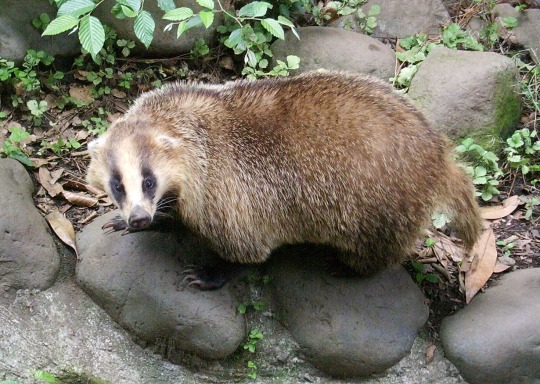
Today the word mujina is pretty firmly a synonym of anaguma - in other words, the Japanese badger. The animal does not substantially differ from other badgers, so I do not think much needs to be said about its ecology. However, historically the term could be used to refer to the tanuki regionally, or interchangeably to both animals, so in some cases if insufficient detail is provided it is hard to tell which one is meant.
This ambiguity extends to the folklore surrounding them, and generally if you know what to expect from tanuki tales, which I’m sure most people reading this do, you will instantly recognize many of the plot elements typical for mujina ones. In other words, it is yet another yokai which typically takes the role of a shapeshifting trickster. Some supernatural phenomena could be basically interchangeably attributed to mujina, tanuki, kitsune or kawauso. Mujina are commonly described taking the form of Buddhist monks, which is one of the many similarities between them and tanuki.

The most famous depiction of a shapeshifting mujina comes from Toriyama Sekien’s Konjaku Gazu Zoku Hyakki (The Illustrated One Hundred Demons from the Present and the Past). The accompanying text compares the creature to the supernatural versions of kitsune and tanuki, and states that the artist relied on a tale according to which a mujina was able to successfully impersonate a Buddhist monk until accidentally revealing its tail.
What makes the mujina special is that it is actually the oldest recorded example of a youkai of this sort. A mujina tale already appears in the early Japanese chronicle Nihon Shoki, dated to 627. It reports an incident of a mujina transforming into a human and singing somewhere in the Michinoku Province. I feel like this alone is a good example of why you should be wary of people who seek to present Nihon Shoki or Kojiki as historical truth.
Western audiences as far as I know were first introduced to mujina by Lafcadio Hearn. To my best knowledge, the fabulous shapeshifting badgers however failed to gain the popcultural recognition enjoyed by tanuki and kitsune. They did appear in Shigeru Mizuki's stories every now and then, and I found a mascot character based on them, but overall there isn't all that much beyond that.
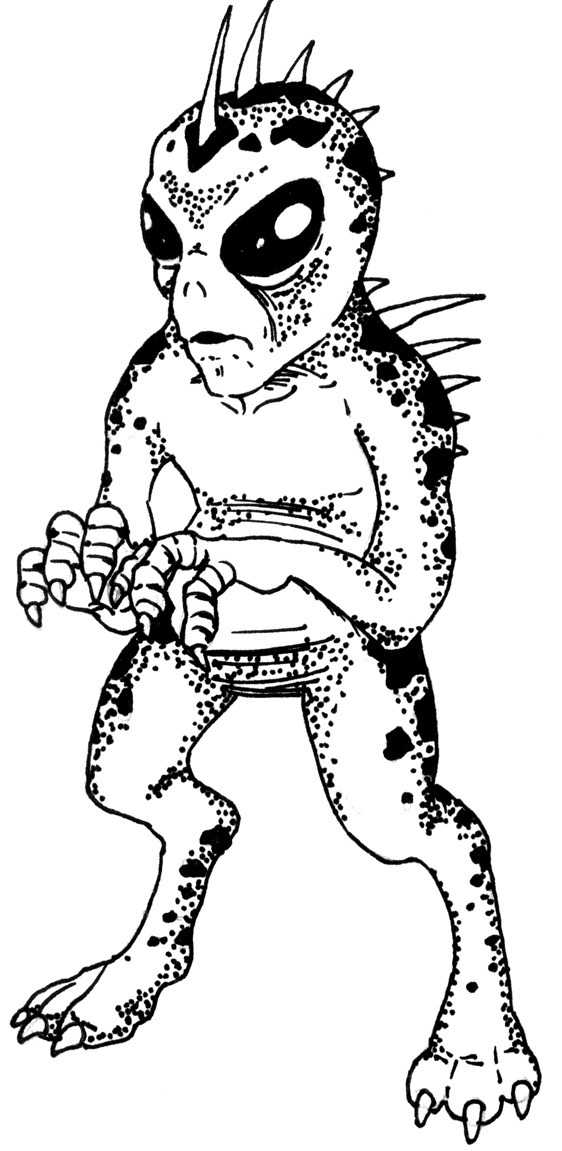
Naturally, there isn't much mujina in Chiyari's design, and she instead most likely owes her distinctly spiky appearance to the other inspiration behind her character, the chupacabra. Mujina are not really portrayed as bloodthirsty, but the poorly documented tenkajin apparently is, which is presumably why ZUN decided to connect Chiyari with the chupacabra, the best known modern blood-drinking creature, who first appeared in tall tales from 1995 and subsequently took popculture by storm after spreading from Puerto Rico to mainland USA and Mexico. I am not a chupacabra aficionado so I have little to offer here, sadly.
4. Hisami Yomotsu - yomotsu-shikome
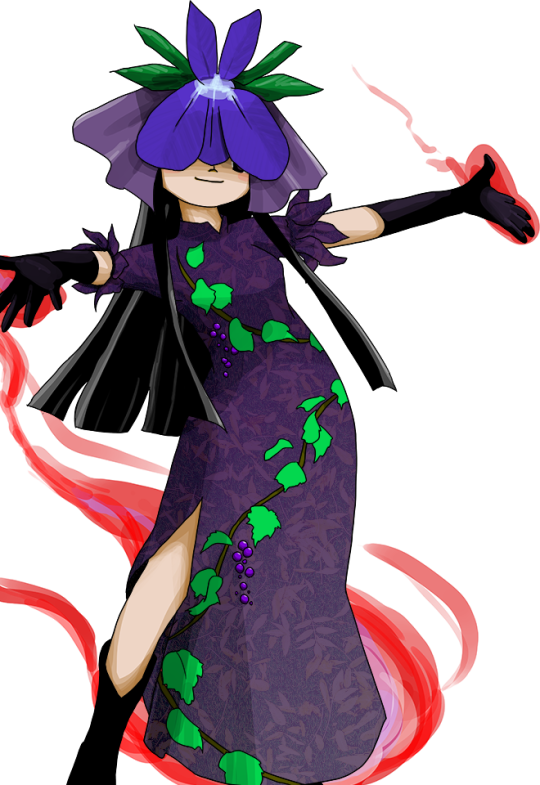
Judging from what I’ve seen on social media and on pixiv, Hisami is shaping up to be one of the most popular new characters (she’s my fave too). In sharp contrast with that, her basis is pretty obscure. So obscure that there isn’t even any historical art to showcase, as far as I can tell (note that this blog claims night parade scrolls might have something to offer, though - I was unable to verify this claim for now, sadly). As we learn from her bio, she is supposed to be a yomotsu-shikome. They’re called the “hags of Yomi” of Yomi in Donald L. Philippi’s Kojiki translation. The term shikome can be literally translated as “ugly woman”. Nothing about them really implies femme fatale leanings we are evidently seeing in Touhou but I’m not going to complain about that.
Yomotsu-shikome appear only in the Kojiki and the Nihon Shoki, and in both of these early chronicles they are portrayed as servants of Izanami after she died and came to reside in Yomi, the land of the dead. Nihon Shoki states there are only eight of them.
The distinct grape vine motif present on Hisami’s clothes seems like an obvious reference to Izanagi’s escape from Yomi following his meeting with Izanami, portrayed in the myth recorded in both of these sources. When the yomotsu-shikome started to pursue him, he threw a vine he used to hold his hair at them. The plant instantly bore fruit, which the entities started to eat. They later resumed the chase, but were once again held back, this time by a bamboo shot. According to the Nihon Shoki, they eventually give up after he creates a river from his piss (sic) to keep them away.

Yomotsu-shikome are sometimes compared to oni by modern researchers. Noriko T. Reider in her monograph about oni argues that alongside hashihime and yamanba (pictured above) they can be effectively grouped with them. Another researcher, Michael D. Foster, is more cautious, and states that despite clear similarities it’s best to avoid conflating oni-like female demons with female oni proper, especially since the latter have a distinct iconography and a distinct set of traits. Norinaga Motoori, the founder of kokugaku or “national learning”, a nationalist intellectual movement in Edo and Meiji period Japan, claimed that oni were based on yomotsu-shikome, which is a pretty dubious claim. It is ultimately not certain when the term oni started to be used, but it is safe to say it has continental origin. And, of course, oni permeate Japanese culture in a way yomotsu-shikome do not.
5. Zanmu Nippaku - Zanmu
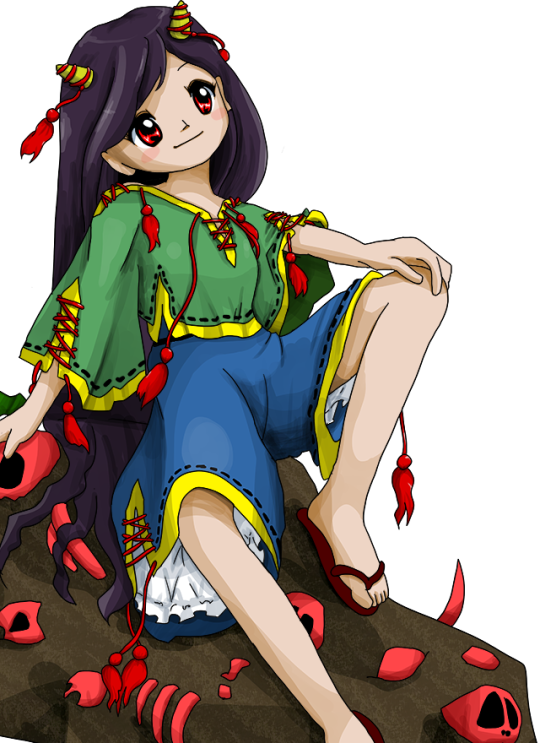
This was the toughest mystery to solve, and I am fully indebted to 9 here, since they figured it out, I am merely depending on what they directed me to. Research is still ongoing, and it feels like we just started to untangle this mystery, so you can safely expect further updates.
Zanmu appears to be based on the Buddhist monk… well, Zanmu. You can learn a bit about him here or on Japanese wikipedia; it seems there are quite literally 0 sources pertaining to him in English, and even in Japanese there is actually very little. Their names are not written the same, ZUN swapped the sign for “dream” from the original name for one which can be read as “nothingness”. If the unsourced quote on wikipedia is genuine, the reason might be tied to the personal views of the irl Zanmu. What little we’ve been able to gather about him is that he was active in the Sengoku period, and apparently was regarded as unorthodox and eccentric. This lines up with Zanmu’s omake bio pretty well. Seems the real Zanmu was also unusually long lived, and was able to recall events from distant past in great detail, though obviously the figure of 139 years attributed to him in a few places online has to be an exaggeration.
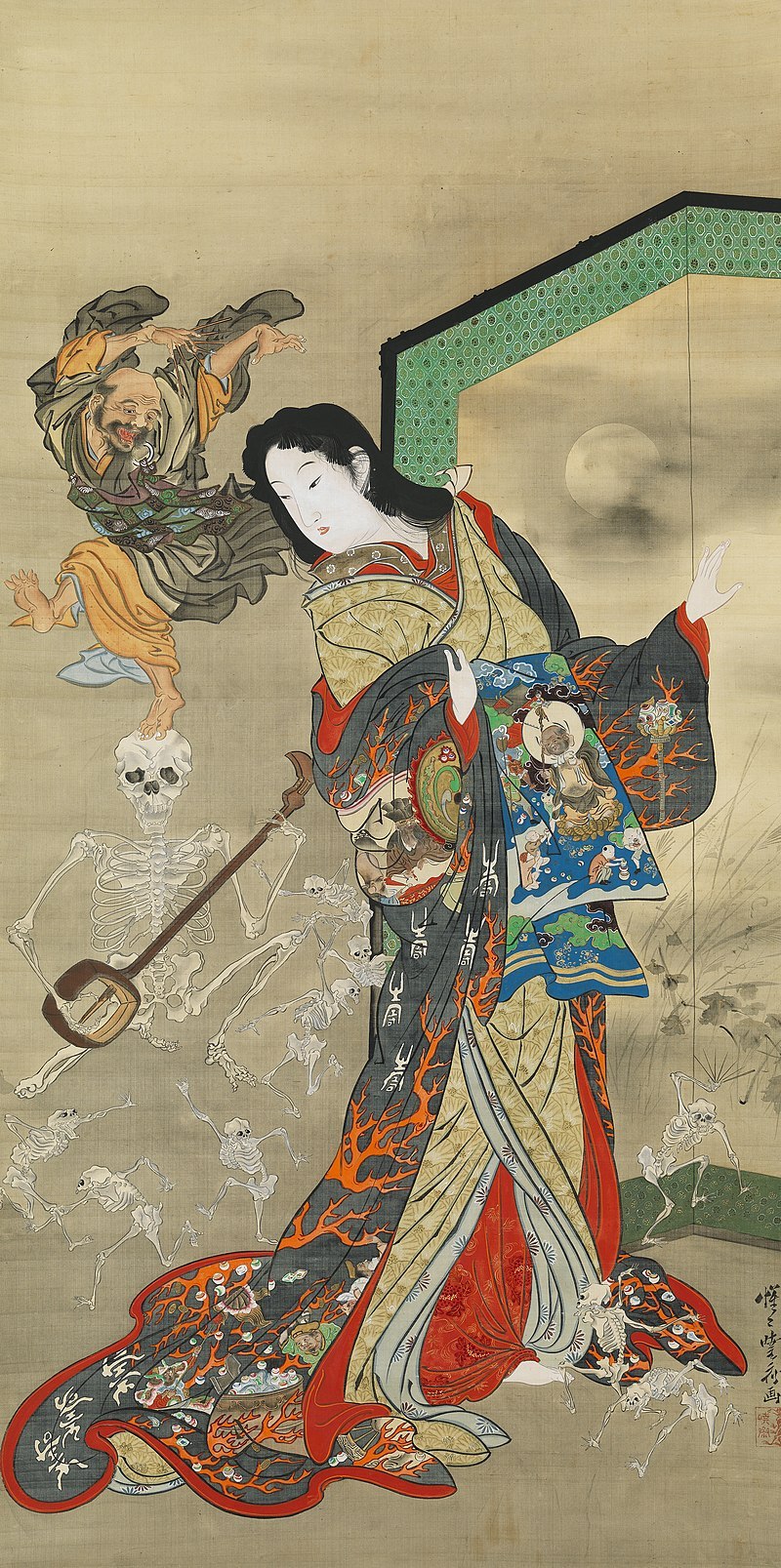
Yet more puzzling is the reference to Zanmu’s familiarity with Ikkyo you might spot in the linked article. Whether the famous Ikkyo who you may know from the tale of Jigoku Dayu is meant is difficult to determine. The chronology does not really add up; on the other hand the logic behind associating one eccentric semi-legendary monk with another in later legends isn’t particularly convoluted. As 9 pointed out to me, if ZUN was aware of this link, and the same Ikkyo really was meant, it is not impossible the connection between Zanmu and Hisami is meant to in some way mirror that between Ikkyo and Jigoku Dayu.
As you can easily notice, it’s pretty clear the historical Zanmu was male. It does not seem his Touhou counterpart is, obviously. I would say we should wait for more info until declaring that we have a second Miko situation on our hands, with a male historical figure directly reimagined as a female character without any indication we are dealing with a relative rather than the real deal. There’s still relatively little info to go by so I would remain cautious (though naturally this is not meant to discourage you from having headcanons).
Neither me nor 9 were able to find any connection between the historical Zanmu and oni… so far, at least. Therefore, what motivated ZUN to make Zanmu an oni remains to be discovered.
As a final curiosity, on a semi-related note it might be worth pointing out that while not as common as their male peers, female oni are not a modern invention, and already appear in setsuwa from the 13th century. A particularly common motif are tales describing a woman turning into oni due to jealousy or anger.
Further reading:
Jason Colavito, The Secret Prehistory of El Chupacabra (2011)
Bernard Faure, Gods of Medieval Japan vol. 1-3 (2015-2022)
Michael Daniel Foster, The Book of Yokai. Mysterious Creatures of Japanese Folklore (2015)
John Knight, Waiting for Wolves in Japan. An Anthropological Study of People-wildlife Relations (2003)
Noriko T. Reider, Japanese Demon Lore (2010)
272 notes
·
View notes
Text
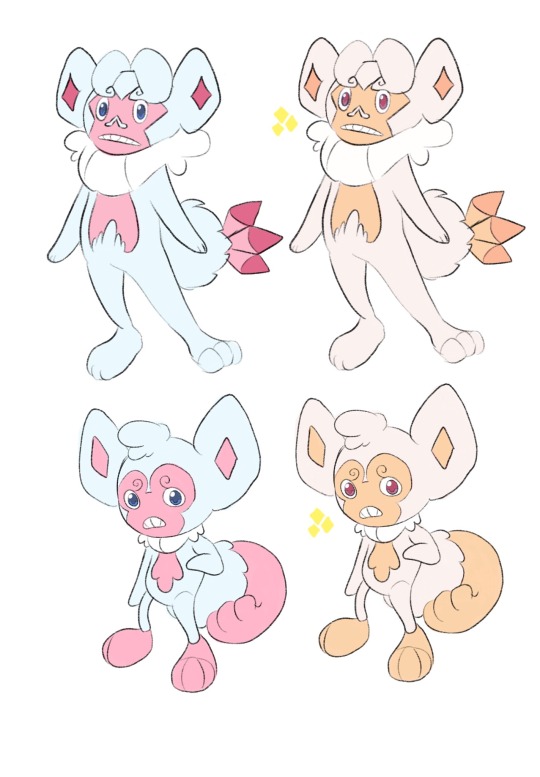
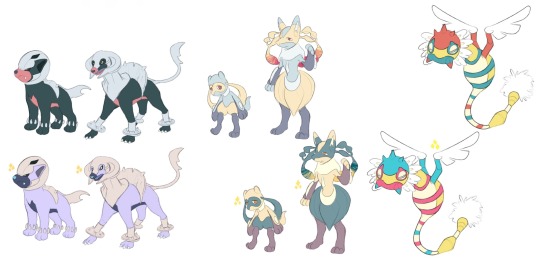
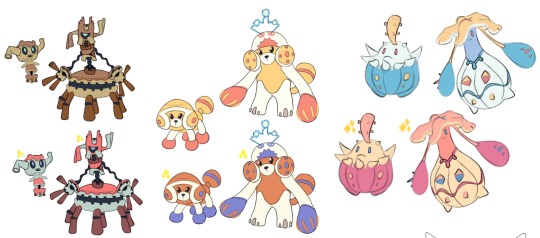
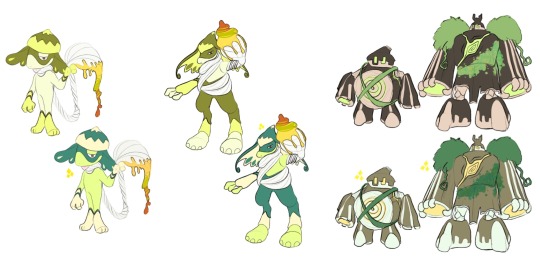
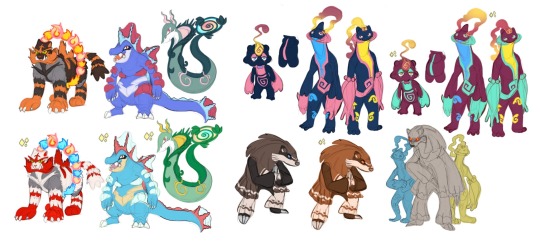
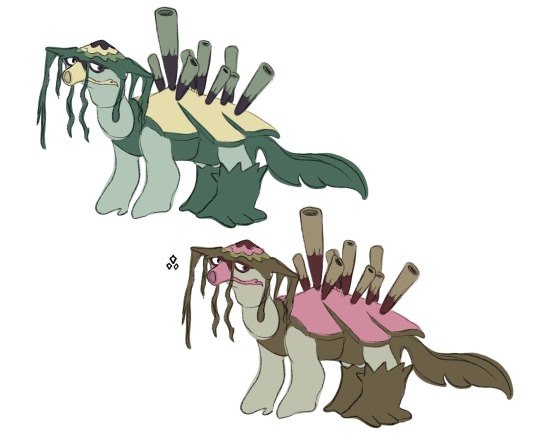
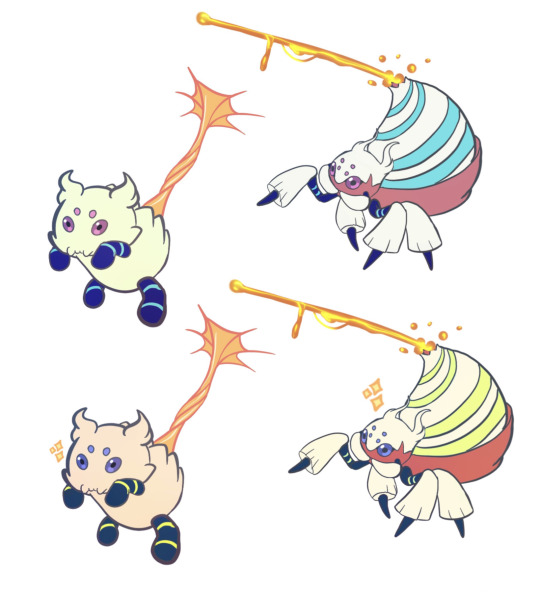
I embarked on this quest where I would design at least 16 lines of ancient Hoenn variants of existing mons for the merchant Emmet fic, just like the Joltik line.
Here’s the list for the basic info:
Aipom and Ambipom: Ice type. Based off the japanese snow macaques.
Houndour and Houndoom: Dark-Steel type. Based off the Okuri Inu legends and temple guardian dogs. (they parallel the hisuian Growlithe and Arcanine)
Riolu and Lucario: Fairy-Rock type. Based off the moon people from the bamboo cutter tale.
Dunaparce: Flying type. An alternative evolution of Dunsparce. Since it defies what Dunsparce is meant to be (a joke Pokémon that crawls on the ground) only the Dunsparces with certain natures can evolve into this (Adamant, Brave, Bold) since it requires strength to defy your own destiny.
Phantump and Trevenant: Ghost-Ground type. Based off clay statues, bojobo dolls and object yokais.
Stufful and Bewear: Fighting-Electric type.
Pumpkaboo and Gourgeist: Water-Ghost type. Based off dead sea urchins, for the sole reason that dead sea urchins look like tiny pumpkins.
Smeargle and Beahive: Normal-Bug type.
Golett and Golurk: Rock-Grass type. Based off ents and of course golems.
Incineroar: Fire-Fairy type. Based off the Byakko and the extinct Japanese tigers.
Feraligatr: Water-Dragon type. Based off the Wani myth.
Serperior: Grass-Psychic type. Based off various snakes like the rattle snake, indian cobra and vine snake, as well as carnivorous plants like the pitcher plant and the venus trap. Also the stereotype of snakes hypnotizing the prey to eat them. It uses its rattle to hypnotize its victims.
Toxel and Toxtricity: Poison-Psychic type. Based off poisonous salamanders. Their skin produces a mucus that upon contact can cause hallucinations.
Mystigoon (Obstagoon): Normal-Fighting type. Hoennian counterpart of Obstagoon, it’s the only Pokémon that has a beneficial effect from Toxtricity’s mucus, thus the two species often collaborate.
Turtonator: Grass-Dragon type. Just like Alolan Turtonator, it’s based off the Mata Mata turtle, but leaning more towards the leaf camouflaging aspect of the animal.
Blastik and Lavantula: Bug-Fire type. Based off the joro spiders and the Jorogumo yokai.
37 notes
·
View notes
Text
Part 1/2 of the summaries and cover arts of the extra "Change of Perspective" shorts, coming soon, in this specific order. Number of chapters will possibly change in the end.
Spoilers to the CoP finale ahead.

"Donnie's Expedition into the Crying Titan" - 4 chapters planned
The Mad Dogz decide to investigate the infamous insides of the Crying Titan, to find out why exactly Magnus was casted out and what the Hidden City's origins are built upon. After encoutering an ancient skeleton oozing Empyrean, an infected medusa-lizard, and a very conveniently placed hole in the wall, Mikey will face his first event as the team medic.
Or: the Good Genes arc.
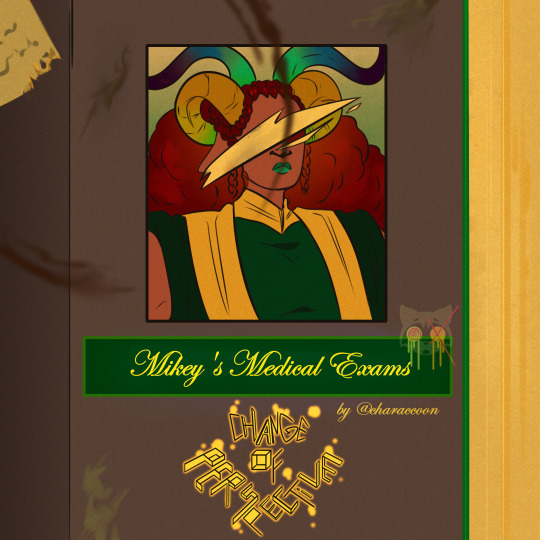
"Mikey's Medical Exams" - 5 chapters planned
The Okuri-Inu's newest apprentice, Mikey Hamato himself, goes through the trials and tribulations of becoming a mystic healer. Upon one of his many trips to the mystic library to acquire the endless list of books necessary, he finds an intriguing one, written by one called Belladona Draxum.
#rottmnt#rottmnt au#rottmnt donnie#rottmnt draxum#rottmnt oc#rise of the teenage mutant ninja turtles#change of perspective#tmnt au#cover art#fic cover art#digital art#char draws
85 notes
·
View notes
Note
Do you or anyone know if the Mahākanha Jātaka or the Okuri-inu dogs from India and Japanese fokelore are closed?
I definitely don't know nearly enough about these areas to give a proper answer here; does anybody reading this know anything?
29 notes
·
View notes
Text
So. So.
I started playing Twisted Wonderland
(bc I avoided it when it first came out thinking it was a dating sim. I was wrong.)
Anyway. I had some thoughts, and now stay with me here.
Nanbaka X Twisted Wonderland.
OK ok hear me out this was supposed to be a joke like most of my ideas but I had some thoughts!!!!
Building 13 - Godape dorms
Why? Hajime is a gorrial and the only 'villian' gorrial I could think of was either king Kong or world of the Apes.
Building 3- VicJewels dorms
Why? Kiji has two main things make-up and pheasant. And the only story I could think of that has pheasants at all was The Fox and the Pheasants. It gave me an idea tho. Well one line did. (Did you know the green pheasant is the nation bird of Japan? Guess that explains why they aren't villians)
"Too much attention to danger may cause us to fall victims to it"
Building 4- HowlingOkuri dorms
Why? Kenshirou's a dog. Okuri-Inu are Yokai dogs. Mostly nice but if you fall they'll eat you (Unless you're giving birth), so I'm making that a thing, not literally of course but still!
Building 5- Bloodwest dorms
Why? OK we all know Samon is based on sun wukong so this house is for him if he didn't go on the journey.
And I have one last note.
Grim is Kyuu.
Also, should I make art of this AU cause I have a few ideas for the dorm sigils also for the supervisor's signature spells and some of the guards
(IDK who to make Crowley tho-)
7 notes
·
View notes
Text
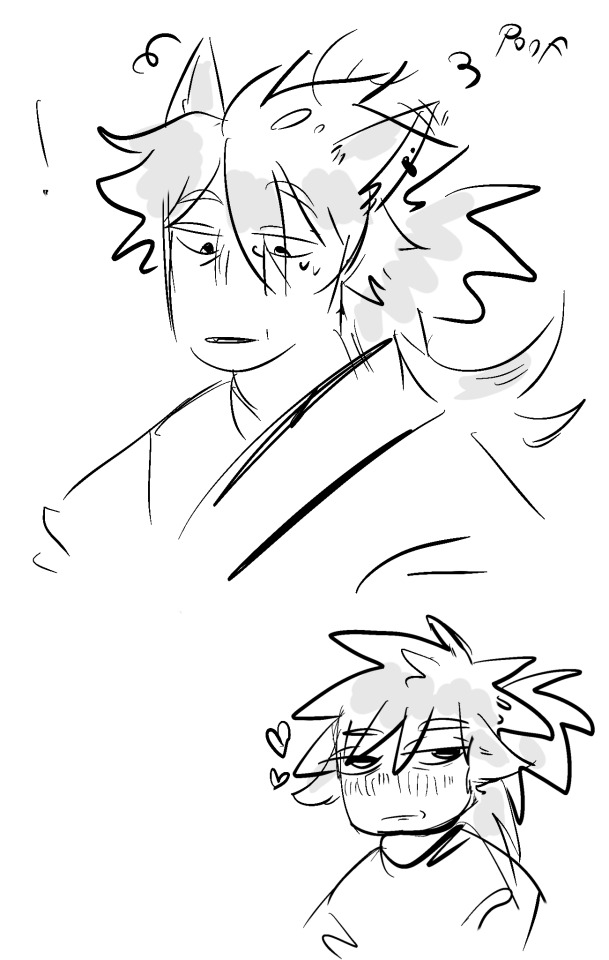
The okuri-inu or okuri ōkami
32 notes
·
View notes
Text
Like a Dragon Tattoo Headcanons
Nishida - Inugami and Blue Aster
Terada Yukio - Susano'o and Lobelia
Goda Jin - Turtle and Pine
Sera Masaru - Anchira Taisho and Cape Primrose
Kido Takeshi - Horse and Ume Plum Blossom
Arai Hiroaki - Takemikazuchi, Namazu, Columbine
Someya Takumi - Kitsune (Fox) and Calandula
Nishitani Homare - Jigoku Tayū (Hell Courtesan)
Shido Koji - Garuda/Karura
Matsuhige - Nue
Kazama Shintaro - Jizo Bodhisattva and Sunflower
Kashiwagi Osamu - Yatagarasu (8-span Crow) and Wisteria
Arakawa Masumi - Dragon King Ryujin with his Daughters and Akane (Indian Madder)
Sagawa Tsukasa - Yosuzume (Night Sparrow) and Okuri Inu (Sending Wolf)
Reina - Gentian Flower
Dojima Yayoi - Tamaori-hime and Ume Plum Blossom
Reiji Ishioda - Oni Leader Shuten-Doji
#yakuza#ryu ga gotoku#rgg#yakuza games#tattoos#irezumi#like a dragon#askrggt#head canon#ishioda reiji#dojima yayoi#reina#sagawa tsukasa#arakawa masumi#osamu kashiwagi#kazama shintaro#matsushige#shido koji#nishitani homare#takumi someya#hiroaki arai#takeshi kido#sera masaru#goda jin#terada yukio#nishida
63 notes
·
View notes
Text
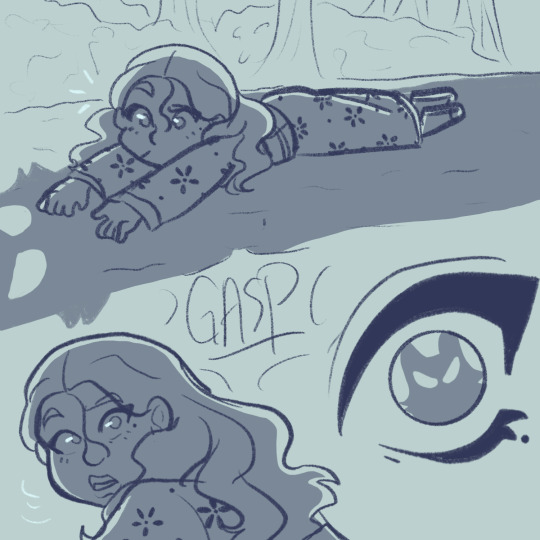

More Yokai AU! Ayaka (Eden) crosses paths with an Okuri-inu (Toki) and charms her way out of being eaten
12 notes
·
View notes
Text

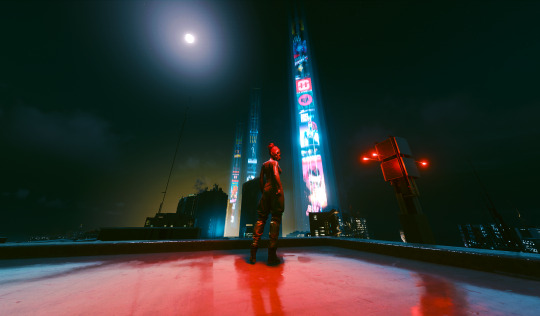
the okuri-inu closely follows people who are walking along mountain paths at nighttime. if by chance the person falls over they will be immediately eaten up
#im busy due to the sudden irl issues#and my mom is visiting hehehehehe#BUT HERE MY GURL FROM THE DRAFTS#the first one as a poster or an album cover??? maybe.....#cyberpunk 2077#fem v#val garcia#kleff vp
30 notes
·
View notes
Text
me? Hahaa I make my own when the canon is mean
@alicems4 @juno-of-wonderland
YOKAI ADORATION AU OR PACK OF PACTS AU (see because like. Hehehee)
Heartsabyul - The Pack of Logic
Name - species. - role
Riddle - Kitsune - Master of rules
Ace - Kitsune - apprentice to Riddle
Cater - Nekomata - Training newbies
Trey - Tengu - Training newbies
Deuce - Tengu - apprentice to Trey.
SavannahClaw - The Pack of Strays
Leona - Koma Inu - Master of the Sands
Ruggie - Tanuki- Master of Trickery
jack - Hoko - Apprentice of Leona
Octovinelle - The Pack of The Depths
Azul - Octopus nyngo - Master of Knowing
Jade - eel nyngo - Master of Truth
Floyd - eel nyngo - Master of Lies
Scarabia - The Pack of The Sun
Kamil - Okuri-inu - Master of the Sun
Jamil - Uwabami- Master of Decit
Pomfiore - The Pack of Beauty
Vil - Slit Face Woman - Master of beauty
Rook - The Tall Woman - The Master of Hunt
Epel - Bunny in the Moon - Vil’s apprentice
Idgnyhide - The Pack of Death
Idia - Shinigami - Master of Woe
Ortho - gashadokuro - Apprentice of Idia
Disomnia - The Pack of iNhUmAnItY
Malleus - Kirin - Master of Magic
Lila - Tobikura - Master of Life
Silver - Human - Apprentice to Lila
Sebek - Yokai Hybrid - Apprentice to Malleus
Special
Grim - regular ahh cat with the enchantment to speak. Fuck your anime boys this is my son.
Rollo - Aobozou - Yokai Hunter
ChenNya - bakeneko - Yokai vigilante
[Thank you Juno and Alice for helping me come up with the idea of making my own! You two are probably the best people (if I didn’t JUST speak to Alice but HEY! I CAN BE NICE AND SAY YOUR VERY NICE TO TALK TOO????)
8 notes
·
View notes
Text
MEETING | closed.
with @blueycsamurai.

To be perceptive, one would have to be...open minded, and concise with why they are. Midnight knew it well, and when she was thrown across time and space once more...she expected it to be the same for others. Yet...the place she had come now, covered in thick snow and deeply tinted grass was not even a place her people had touched.
The East was a place that Satyrians seldom visit--why would they? It wasn't theirs to begin with. There had to be a reason why she was sent here of all places, however--something dark was a foot. Something she needed to find before the humans did--but she didn't know how. She was already sensitive to the towns she had passed by in-- how the people rumor that a Okuri Inu haunts the hills. Whatever that was...she knew she had to keep away from the people.
The ordinary people, that is.
In her week of being here, trying to navigate unfamiliar territory, she had heard of a different rumor. Although the dialect they spoke was strange, one word always stuck in her head... Onryō. And even now, at the stroke of Midnight-- she heard the stroke of kindling in the brush nearby. For once, with her ears up high, she decided to get a closer look.
Hiding behind a tree, Midnight stalked the man by a fire, trying to get a good glimpse of him. Blue oceans watched over closely, as if trying to gauge him carefully--after all, he could be a hunter, sent for the death of whatever than Inu thing the folk called her. As if on some will, she stepped into the snow a little too loudly, causing her to crouch with a surprised look on her freckled face...

...That was too close. Too loud-- all she could do was keep her hand open for her own sword incase of anything now. The woods were too quiet at night too...usually a crickets chirp could mask her deep breaths and shuttered speech.
"...Hah...shit...."
8 notes
·
View notes